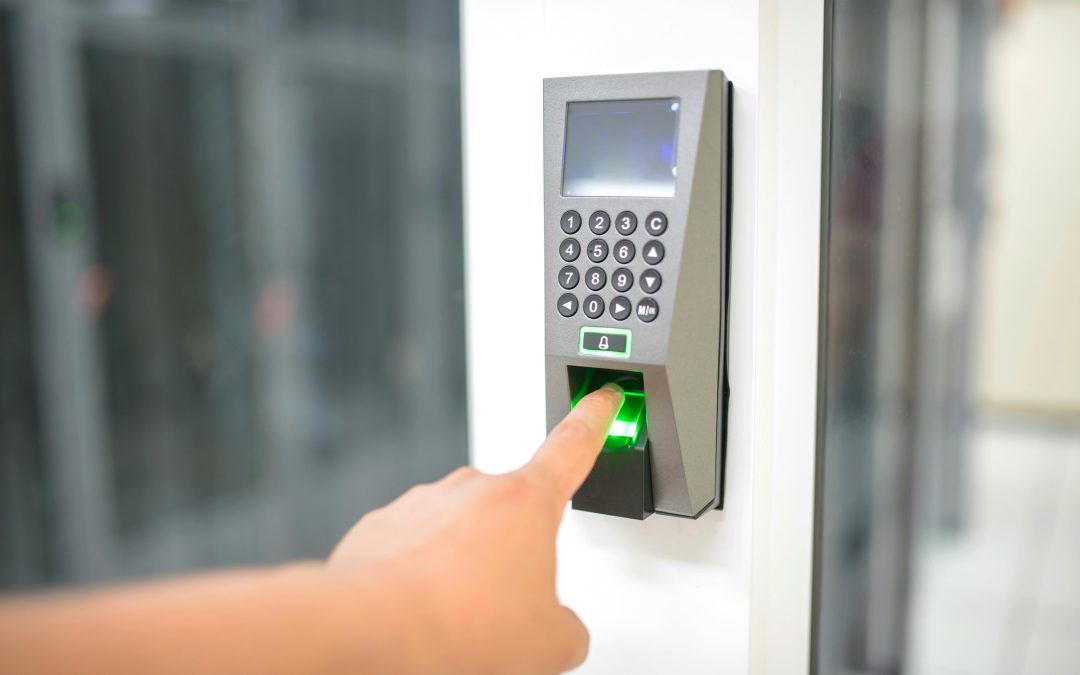In today’s rapidly evolving technological landscape, biometric authentication is no longer a futuristic concept—it’s a reality that’s transforming how industries operate. As you navigate through your daily life, you might already be using biometric features like fingerprint scans without even thinking about it.
This advanced technology is transforming the way businesses ensure security, streamline operations and enhance user experiences. You might be wondering how various industries are implementing these cutting-edge systems. From securing your financial transactions to improving patient care in healthcare, biometric authentication is making its mark.
According to Straits Research, the global biometric authentication and identification market touched about $4,135 million in valuation in 2021. This market is projected to skyrocket to $14,225 million by 2030, growing at an impressive growth rate of 16.7% between 2022 and 2030. This rapid growth highlights how essential and widespread biometric technology is becoming across various sectors.
This article aims to explore how key industries are leveraging this advanced technology to enhance security and improve user experience.
Transform Security in Financial Institutions
Financial institutions are integrating biometric authentication to enhance security. Banks use fingerprint and facial recognition for secure account access. Customers appreciate the convenience and security of the technology. This results in a smoother and safer banking experience for users.
Biometric systems also streamline operations for financial institutions. Employees can verify identities quickly, reducing wait times. This efficiency improves customer satisfaction and boosts overall trust in the banking system.
The global biometric banking market, as per Allied Market Research, stood at $5 billion in 2022. It is estimated to surge to $23.6 billion by 2032. This represents a healthy growth rate of 17.2% from 2023 to 2032. These optimistic figures represent the pivotal role of biometric authentication in revolutionizing security measures within financial institutions.
Enhance Patient Safety in Healthcare
Biometric authentication significantly improves patient safety in healthcare settings. Hospitals utilize fingerprint and iris scanning for accurate patient identification. This ensures that the right treatment is administered to the right person.
These biometric systems minimize the risk of medical errors caused by identity mix-ups. Additionally, healthcare providers can access patient information swiftly and securely, enhancing efficiency.
Various biometric authentication types are employed in healthcare. These include fingerprint verification, eye scanning and recognition, signature verification, voice identification, and hand geometry. Each method offers unique advantages in enhancing patient safety and streamlining healthcare processes.
Streamline Travel in the Transportation Sector
Revolutionizing travel in the transportation sector, biometric authentication expedites passenger processes. Airports implement facial recognition technology for efficient boarding procedures. This reduces wait times and enhances the overall travel experience for passengers.
The technology also enhances security measures within transportation hubs. Authorities use fingerprint scanning to verify passenger identities accurately. This ensures that only legitimate travelers can access restricted areas, bolstering safety protocols.
Moreover, it streamlines check-in and baggage handling processes. Passengers can use facial recognition or iris scanning for seamless identification. This minimizes queues and congestion, optimizing operational efficiency in the transportation sector.
Boost Customer Experience in Retail
Elevating customer experience in retail, biometric authentication simplifies transactions. Retailers employ fingerprint scanning for secure payment processing. This enhances convenience and reduces checkout times for shoppers.
Moreover, it facilitates remote mobile payments in the retail sector. Customers can use their fingerprints or facial recognition to authorize transactions. This seamless payment method enhances convenience for shoppers, boosting overall satisfaction with the retail experience.
A recent study by Juniper Research predicts that by 2027, biometrically authenticated remote mobile payments will be worth $1.2 trillion worldwide, up from $332 billion in 2022. These transactions use biometrics like facial and fingerprint recognition for security. The substantial 365% increase in growth is attributed to new regulations such as Strong Customer Authentication (SCA), promoting wider adoption of secure payment methods.
Secure Identity in Government Services
Biometric authentication offers robust protection and enhances secure identity verification in government services. Government agencies employ fingerprint and facial recognition technologies for identity verification.
The technology enhances the integrity of government programs and services. Citizens can securely authenticate their identities for various purposes, such as applying for benefits or accessing government databases. This streamlines processes, reduces fraud, and enhances overall efficiency in government service delivery.
Moreover, it reinforces the accountability and transparency of government operations. By accurately verifying the identities of citizens and employees, government agencies can maintain trust and confidence in their services.
However, biometric authentication has drawbacks, including privacy concerns, security risks, accuracy issues, data storage challenges, and limited compatibility, as highlighted by AU10TIX. The sensitivity of biometric data poses privacy risks, while its immutability and susceptibility to theft raise security concerns.
Frequently Asked Questions (FAQs):
What Are the Key Factors for Biometric Systems?
Key factors for biometric systems include accuracy, security, scalability, and user acceptance. Accuracy ensures reliable identification, while security safeguards against unauthorized access. Scalability enables system expansion, and user acceptance ensures widespread adoption.
Why Are Businesses Using Biometrics for Authentication?
Businesses utilize biometrics for authentication due to its reliability, enhanced security, and improved user experience. Biometrics offer precise identification, robust protection against fraud, and streamlined authentication processes, driving operational efficiency.
What Is the Most Secure Biometric Authentication Method?
Facial recognition stands out as the most secure biometric authentication method. It relies on unique facial features for identification, offering a high level of accuracy and resistance to spoofing attempts. Additionally, facial recognition technology continues to advance, further enhancing its security capabilities.
In conclusion, advanced biometric authentication is rapidly transforming key industries, from finance to healthcare, retail, and government services. With its ability to enhance security, streamline processes, and improve customer experiences, biometric technology is becoming increasingly indispensable in today’s digital landscape. As industries continue to embrace the technology, we can expect to see even greater advancements and benefits in the years to come.

